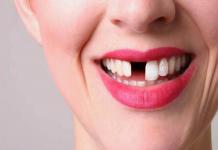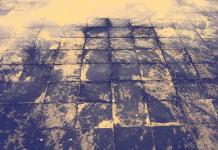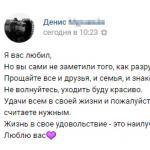The ears of a child, like an adult, produce a special secretion - earwax. There is an opinion that the more often and deeper the ears are cleaned, the better. This is wrong. In healthy ears, the process of self-cleaning of the ear canals usually occurs during natural activities: talking, chewing, coughing, etc. This is facilitated by the movement of the temporomandibular joint, which is located next to the anterior wall of the external auditory canal. You only need to clean the auricle, without under any circumstances penetrating the ear canal. They do this for hygienic purposes.
The external auditory canal consists of two sections: membranous-cartilaginous (closer to the exit) and bone (located deeper, closer to the eardrum). The skin of the first of them contains numerous sebaceous and sulfur glands and hair. The skin of the external auditory canal self-cleanses due to the growth of superficial skin cells from the deep sections outward. It becomes clear that sulfur is produced only in the membranous cartilage region; it protects the skin of the ear canal from damage and inflammation. Sulfur is not dirt, so there is no need to carefully clean it out. The place where one section transitions to another is narrow (the isthmus), so when you clean the ear on your own, the wax masses are pushed past the isthmus, towards the eardrum. As a result of constant “cleansing” of the ears with cotton swabs, matches, hairpins, wax is pressed, which leads to cerumen plugs.
Sulfur plugs are an accumulation of secretion from the sulfur glands along with dead skin cells and dust. The cause of cerumen plugs can be: increased formation of cerumen, narrowness and tortuosity of the ear canal, inflammation of the skin of the canal, foreign bodies, dust particles entering the ear canal during work associated with increased dustiness of the air (miners, millers, tobacco factory workers, etc. .). When cleaning the ears, irritation of the sulfur glands occurs, which leads to increased formation of sulfur or, conversely, to a decrease in its formation or cessation of the glands, which leads to a feeling of dryness and itching of the ear canals.
Cleaning your ears yourself is also dangerous: you can damage the ear canal, eardrum, and, worst of all, damage the chain of auditory ossicles, which can lead to hearing loss and painful attacks of dizziness.
If you are prone to the formation of wax plugs, have your ears cleaned once every 6 months (or when symptoms appear) by an otolaryngologist. If wax plugs are not removed, this can further lead, in addition to hearing loss, to external or acute otitis media, and in advanced cases, to bedsores of the external auditory canal.
Symptoms of wax plugs in the ear appear when water gets into the ear and excessive sweating. This is ear congestion, resonance of one's own voice, noise in the ear. After washing out the wax plug from a specialist, you can, for prevention, instill a 3% solution of hydrogen peroxide, 5 drops each, or petroleum jelly into the ears 2-3 times a month for 15-20 minutes while lying on your side, with the ear instilled upwards, then clean the external auditory canal with a sterile cotton wool flagellum using a twisting motion. Non-sterile cotton swabs are not suitable for the ears; there is no need to wrap the cotton around a match or stick, since, again, there is a danger of damaging the ear structures.
There is no need to rinse it yourself, since it is not possible to rinse it in all cases (for example, if there was previously suppuration from the ear), but only have it manually cleaned by a specialist.
So when should you clean your child's ears?
Clean only the outer ear, no more than once a week, and never use cotton swabs. Deeper cleaning is carried out only by a doctor in case of inflammation of the ears; before administering the drug, moisten a flagellum of sterile cotton wool in a 3% solution of hydrogen peroxide and clean the ear canal of pus, dead skin cells, waste products of microorganisms until the cotton wool is clean .
When a young mother begins to care for her baby, she immediately has a lot of questions.
And this is absolutely normal, because every woman not only wants to take care of her baby, but also not harm her.
That’s why the question of how to clean your baby’s ears and how to do it as correctly as possible continues to be relevant.
Simple process or vice versa? Is it possible or not to clean your ears?
It may seem that there is nothing extremely complicated in regular ear cleaning. Indeed, all you need to do is buy a package of ear sticks in a store or pharmacy, moisten them with warm water or hydrogen peroxide, insert the stick into the child’s ear and twirl there. As it turns out, this approach is completely wrong and even dangerous.
Doctors forbid cleaning a child's ears. They allow you to clean just the shell of the ear, but under no circumstances should you climb inside the ear. Parents, remember! Only the ear canal should be cleaned!

You can’t clean your baby’s ears this way for the following reasons:
— the walls of the toddler’s ear canal are very easily injured;
— the baby’s eardrum can be injured by chopsticks;
- each movement of the cotton swab does not so much help extract wax from the little one’s ear as push it deeper and deeper; The sulfur gets compressed over time, which can result in a plug, which makes hearing difficult and causes unpleasant sensations for the child.
How to properly clean a child's ears? From sulfur to sulfur plug
There is another reason why it is better not to clean your child's ears with cotton swabs. Sulfur is a natural lubricant that is necessary for the proper functioning of the baby’s hearing organs (and not only). The lack of it in the ear canal must somehow be compensated. And when the mother carefully removes it from the baby’s ear, she creates a certain deficiency of the necessary secretion.
The result will be more active work of the sulfur glands. That is, the more often the secretion is removed from the child’s ears, the better it will be produced.
But if it does happen that sulfur plug does occur, under no circumstances should you remove it yourself, at home! There is a huge chance that these actions can cause injury to the child’s ear. You should definitely show the baby to an otolaryngologist and not take any independent action.
How to properly clean a child's ears? Self-cleaning baby's ears
It turns out that nature designed it so that our ears can clean themselves. The glands - sebaceous and sulfur - which are located in the ear, skillfully secrete a special secret that protects the ear from damage. In the ear, epithelial cells are constantly being renewed from the eardrum outward.
In addition, the temporomandibular joint and its structure also had a hand in the self-cleaning of the ears. During normal conversation, coughing, sneezing, laughing or the process of eating food - that is, during any movement of the jaw, wax accumulated in the ear and dead epithelial cells are expelled from the ear.
How to properly clean a child's ears? When and with what?
How should parents carry out the process of properly cleaning their child’s ears? From the above, we can already conclude that you should not “climb” a cotton swab inside the hearing organ. On the contrary, the auricle, in which there is an accumulation of released wax, needs to be cleaned.
It is best to do this in the evenings, while bathing the baby. There are two simple reasons here. According to the first, the baby actively sucked on his mother’s breast all day, which made it possible for the secretion to come out from the depths of his ears. And according to the second, due to the action of warm water, sulfur always softens and is much easier to remove. It is enough just to rinse the baby’s ears with ordinary water with your fingers, without using additional products. You can then dry it with a diaper or soft towel.
Over the course of a week, you can additionally clean the baby’s ears once or twice with a piece of gauze twisted into a thin flagellum.

It would be more correct to slightly moisten the gauze with ordinary boiled water or oil. Some parents use cotton wool for the same purpose. Not a bad choice either. But sometimes it can disintegrate into fibers and adults will “forget” a piece of it in the baby’s ear, thereby causing him some inconvenience.
Here you can see how to clean a baby’s ears for hygienic purposes, from 0 to 3 years old, using cotton wool pads:
Let me make a reservation right away, we will talk about removing ear plugs at home.
Older children, from about 3 years old, can clean their ears with ear drops. Remo-Wax(or A-cerumen, and others like them).
First, you need to warm up the oil in your hands (or place the bottle of oil in a glass of warm water for a few minutes). Place the child on his side in the fetal position. The parent drops up to 10 drops into the child’s ear (See instructions). Now, the child should lie in this position for 20 minutes. (at this time you can entertain the child with cartoons). Afterwards, the child turns over to the other side and lies there for another 2 minutes, during which time the dissolved wax flows out of the ear.
Now you need to rinse your ears with warm boiled water to remove any remaining dissolved wax.
This can be done using a 20 cc syringe or bulb:

To do this, you need to draw water into a syringe (or bulb) and direct a stream of water under pressure into your ear. The child's head should be vertical and slightly lowered forward. Thus, rinse until clean water.
Repeat similarly with the second ear.
Adults can wash their ears under the running shower...
To do this, you need to remove the shower head from the shower hose. Turn on the water and adjust the flow of the warm stream. Direct the stream under pressure into the ear. The head should be vertical and slightly lowered forward.
Repeat similarly with the second ear. .
This procedure must be done in a course, 3 days in a row.
Further, in order to prevent the appearance of wax plugs, such ear cleaning can be carried out in a course once every 6 months. (or once every 12 months, depending on how quickly the ears become clogged with plugs, which you can find out in consultation with an ENT doctor or you yourself notice that the child has begun to react poorly to your words and surrounding sounds).
Video
Here's a way to clean your ears using hydrogen peroxide. It clearly shows how to rinse your ears with water:
 ----
----
It may also turn out that the plug is old and hardened. In this case, it may not be possible to remove it using the methods described above. To remove it you will have to contact an ENT specialist. The ENT specialist, before removing the hard plug, may prescribe drops into each ear - as much as will fit into the ear. After instillation, the child lies with his ear up for 2-3 minutes. and then cover the ear with cotton wool; The same is repeated with the second ear, 3 times a day, 3-4 days. At the same time, vasoconstrictor drops are dripped into the nose, also 3 times a day, 1-2 drops, for 3-4 days. On the 4th day we go to the ENT specialist and the doctor removes the softened plug using a metal rod or by washing, depending on how well the hard plug was softened.
----
Also, from 3 years old, ears are allowed (but not necessary) !
) clean using cotton swabs without a limiter.
To do this, after bathing, soak a cotton swab in oil (See link above) or in rose water. Under Not Insert it into the depths of the ear at a right angle, approximately 2-3 mm, and with a pushing motion, push the sura out of the ear.
Under no circumstances should the stick be inserted deeply into the ear, at a right angle, or use rotational movements ( ! ) This manipulation causes the wax to clog even deeper inside the ear and simply spread across the walls. Moreover, such manipulations can damage the child’s internal hearing aid ( ! ), which will subsequently require long-term treatment and recovery - for this reason, ENT doctors are against using cotton swabs for children under 8-10 years old and recommend cleaning the ears by rinsing them.
You can also try Vaxol ear spray:
Option with Hydrogen Peroxide:
drip and lie down for min. 30 to soften the sulfur. Then turn over on the other side so that it is glass. Repeat with the second ear.
Attention:
If you have otitis media or if your internal hearing aid is damaged, you cannot rinse or clean your ears. !
In principle, you and I have already received the answer - no way. But what does this mean? Let the child have dirty ears? Why can't you clean them? After all, adults clean their ears. It turns out that your ears really don't need to be cleaned. Inside. Our ears have an absolutely unique structure, thanks to which they clean themselves. A special secretion is secreted inside our ear - earwax. This is a lubricating protective material that prevents the penetration of bacteria and protects the ear from damage. The spent wax is slowly pushed out into the auricle. It is pushed out due to the fact that you and I make chewing movements, yawn, thus helping the ear canals push the wax out. Accordingly, sulfur enters the ear. And this is what you and I must clean! Both adults and children should clean only the ears and in no case the ear canal itself.
Now we answer the question - how to clean a child’s ears.
- Ear hygiene is a daily procedure. It can be performed both in the morning and in the evening. In the morning it is convenient to deal with the ears during general hygiene. In the evening it is very good to clean the ears after bathing the child.
- It is imperative to clean not only the ear itself, but also wipe it with a damp cloth behind the ear. Children's ears often sweat. And dirt accumulates behind the ears. In order to avoid inflammatory processes, it is necessary to wipe behind the ears daily to remove dirt and remnants of the epithelium.
- When swimming, water can get into the ear canals. As a rule, children don't like it. Therefore, it is best to ensure that water does not get into the ears. But if it does happen, it’s okay. Just after bathing, place the child for a few minutes, first on one side, then on the other. Water will flow out of the ears. Then the ears will need to be blotted with a clean towel or diaper.
- Each ear should be wiped with a separate cotton swab or a separate special cotton swab with a limiter.
How often should you clean your child's ears?
Hygiene of the ears and cleansing of the skin behind the ears is a daily procedure. This must be done every day, either in the morning during general hygiene procedures, or in the evening after bathing the child.
As for the ear canals themselves, consultation with doctors is required. Sometimes, due to the structure of children’s ears, it is necessary to instill hydrogen peroxide in their ears once every 7-10 days. So you clean your child's ears with hydrogen peroxide. But under no circumstances should you put a cotton swab or anything else into your ear. Just gently place the child on the side and drop one or two drops of hydrogen peroxide into the ear. The child lies on his side for literally 1-2 minutes. Then you repeat the same procedure with the other ear. To ensure that there is no peroxide left in the ear, you need to blot the ears with a clean cotton diaper.
The ear is an organ that is responsible for the perception of sounds. It is very important to monitor ear hygiene in children. You need to maintain cleanliness correctly to avoid any complications and chronic diseases.
First of all, you need to know that a feature of the ears is the ability to self-clean. The wax and sebaceous glands located inside the ear are designed to protect against infections and insects. Therefore, when cleaning your ears, the main thing is not to damage anything.

If your child’s hearing has deteriorated, their ears are blocked, or extraneous sounds are heard, then immediately contact the clinic. An otolaryngologist will conduct an examination and remove accumulated wax with a special device.


















